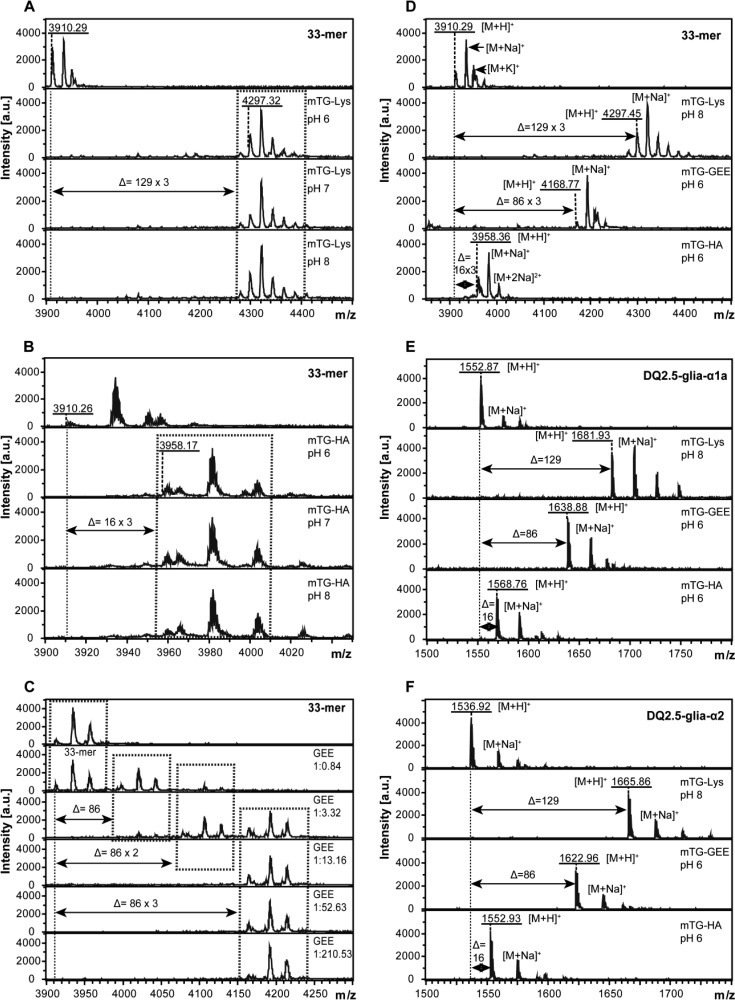Figure 1.
Transamidation pattern of DQ2.5-glia-α1a, DQ2.5-glia-α2, and 33-mer peptide after modification using mTG and three different acyl-acceptor molecules. (A) Effect of pH on 33-mer reaction induced by mTG in the presence of Lys. (B) Effect of pH on 33-mer reaction induced by mTG in the presence of HA. (C) Effect of GEE concentration on 33-mer transamidation induced by mTG at pH 6.0. Molar ratio between the 33-mer peptide and GEE is 1:0.84, 1:3.32, 1:13.16, 1:52.63, 1:210.53 as shown. (D) Transamidation pattern of 33-mer by mTG. As compared with native peptide, 33-mer cross-linked to Lys, GEE, and HA resulted in a shift of 129 × 3 Da, 86 × 3 Da and 16 × 3 Da, corresponding to the addition of three Lys, GEE, and HA groups, respectively. (E) Transamidation pattern of DQ2.5-glia-α1a by mTG. DQ2.5-glia-α1a presented 129 Da, 86 Da, and 16 Da shift responding to the addition of a single Lys, GEE, and HA group. (F) Transamidation pattern of DQ2.5-glia-α2 by mTG. DQ2.5-glia-α2 presented 129 Da, 86 Da, and 16 Da shift responding to the addition of a single Lys, GEE, and HA group. Monoisotopic mass are shown throughout.

